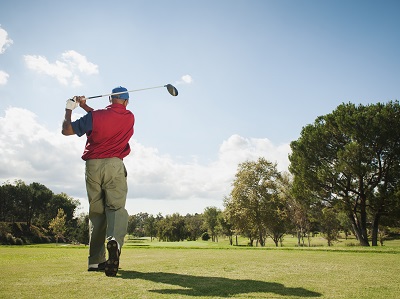
Back pain can involve a mechanical or chemical irritation to the structures, as well as a psychological component. A physical examination involves assessment of the location of tenderness, structure and alignment, range of motion (ROM) or flexibility, muscle strength, and neurological tests.
The age of the athlete and the type of sport in which they participate can help with the diagnosis, as well. Identifying the precise source of pain is challenging, and diagnostic imaging studies do not always correlate well with patients’ symptoms or their functional outcomes.
Causes of Lower Back Pain
Muscular Strains and Ligament Sprains
These can be from overuse, improper technique or body mechanics, poor flexibility or conditioning, as well as direct trauma. The category is often diagnosed by exclusion and the condition is typically self-limiting.
Spondylolysis and Spondylolisthesis
The first is a defect in the bony ring of the spinal column or vertebra, and the second is a slippage of one vertebra in relationship to another. Frequently, these are found in athletes who do a lot of twisting or hyperextension (bending backward) and can be mistaken for sprains or strains.
Disc Herniation
Though less common in the young athlete, high impact to the spine can produce a tear in the annulus (outer covering of the disc) between the vertebra, allowing the inner disc contents to protrude or extrude and place inappropriate pressure on the spinal cord and/or nerve roots. Often, there will be neurological symptoms, such as pain that radiates into the buttocks or leg, numbness or tingling in the leg, and/or weakness.
The older athlete can have any of the above but is more susceptible to degenerative diseases of the spine, chronic disc herniation and mechanical pain due to weight-control problems.
When planning treatment for low back pain, the overall goal should be to restore normal spine function and encourage a safe and independent return to activity through appropriate rehabilitation.
Treatment Options for Lower Back Pain
Exercise
A variety of exercise categories can include directional preference activities, stabilization exercises, core strengthening, general strengthening, aerobic conditioning, flexibility and posture exercises, as well as sport-specific or simulation activities.
Manual Therapies
These include mobilization of the spine or careful manipulation for select patients, as well as soft tissue techniques. The goal would be to use these techniques in conjunction with other forms of exercise and to discontinue their use over time to minimize a patient’s dependence on them.
Supplemental or Complementary Treatment
Practices can include heat or cold therapy, ultrasound and electrical stimulation in many forms, biofeedback, traction or massage. Research does not support these as providing the best treatment for low back pain but can be used sparingly to supplement the first two categories.
Massage in particular has been shown to provide more psychological than physiological relief. Alternative treatments such as acupuncture are of benefit to some. Doctors can provide epidural steroid injections or nerve blocks in some cases where the pain is more severe and unresponsive to conservative treatments.
Surgery
Surgery is rarely necessary in the management of acute low back pain in athletes. In most circumstances, it is the selected form of treatment only after a prolonged program of non-operative management when it is evident that conservative treatment has failed.
Find Personalized Care
The team of physicians, orthopedic surgeons, therapists, and trainers at Memorial Hermann | Rockets Sports Medicine Institute treat a variety of sports injuries, allowing the active patient to return to their desired activity level in a safe, effective, and timely manner.
Contact Us
For more information on the Rockets Sports Medicine Institute orthopedic doctors or surgeons, treatment for injuries, scheduling Human Performance services, or getting more information about physical therapy, please fill out the form below or call us at (713) 222-2273